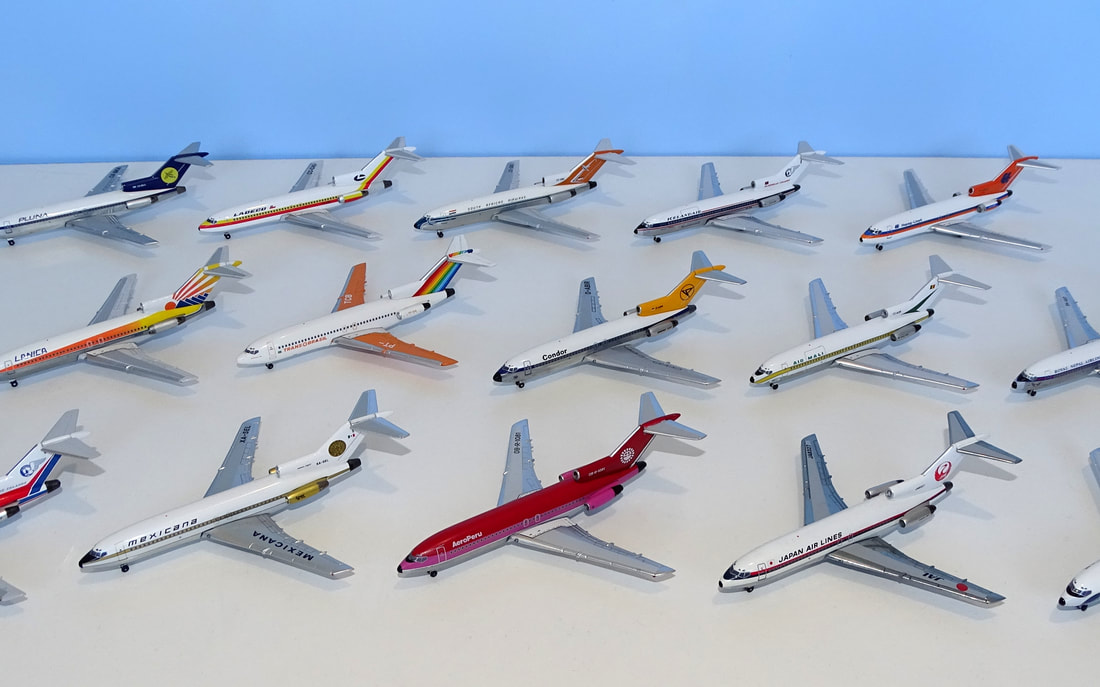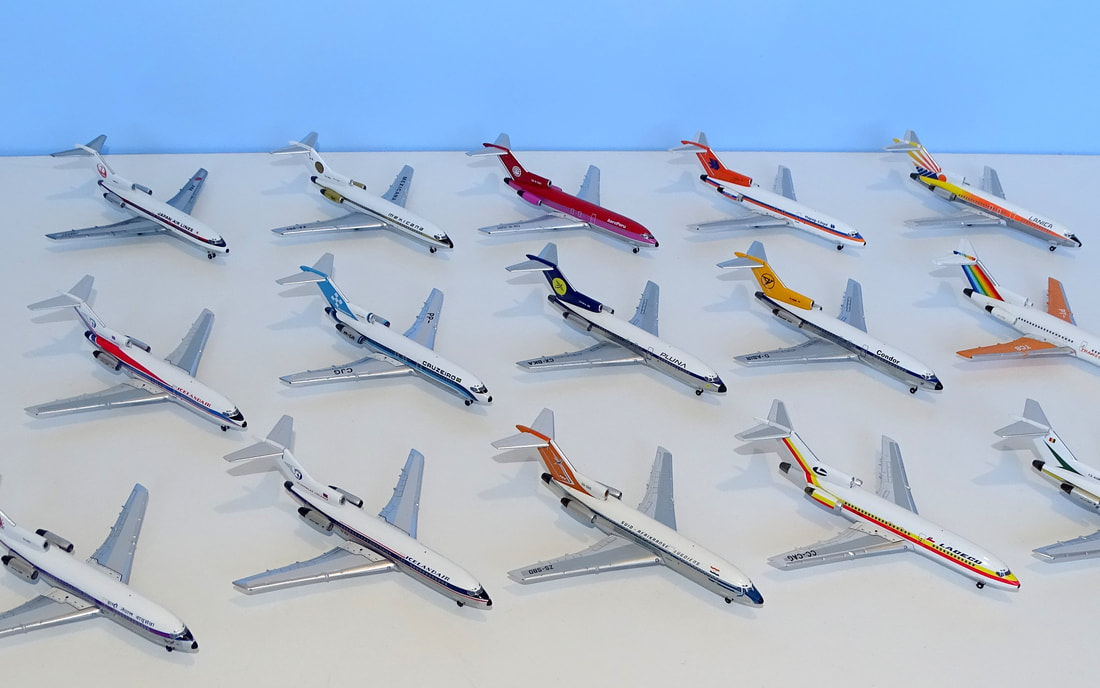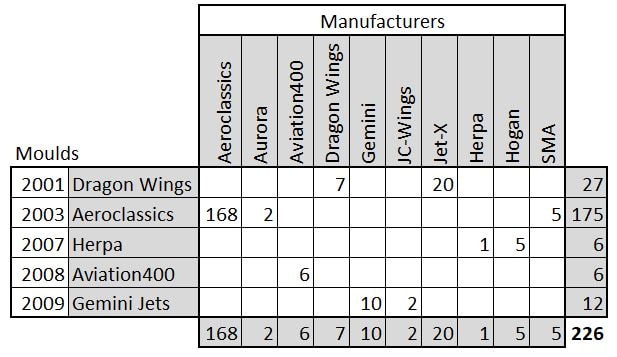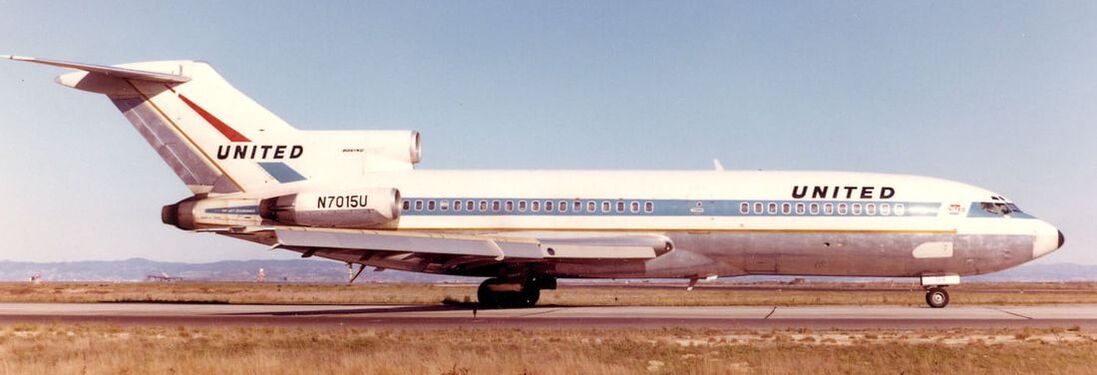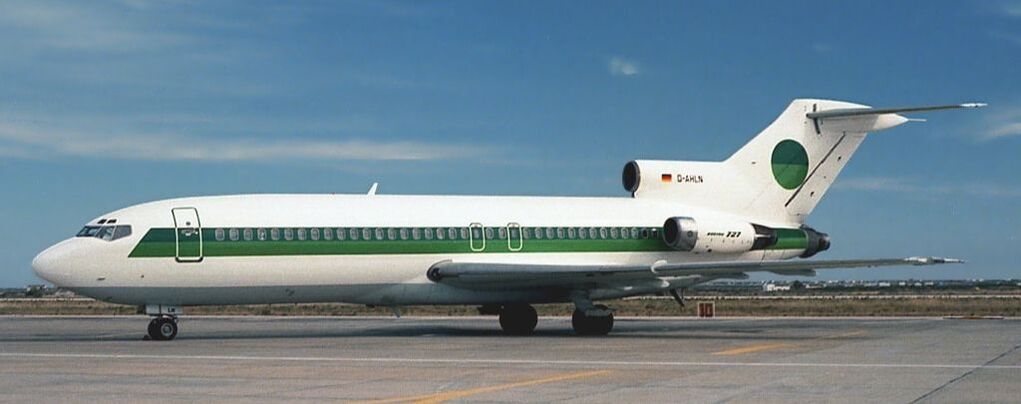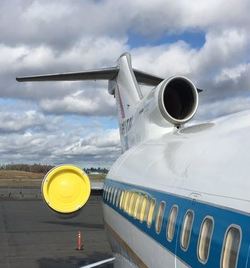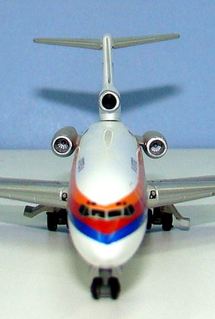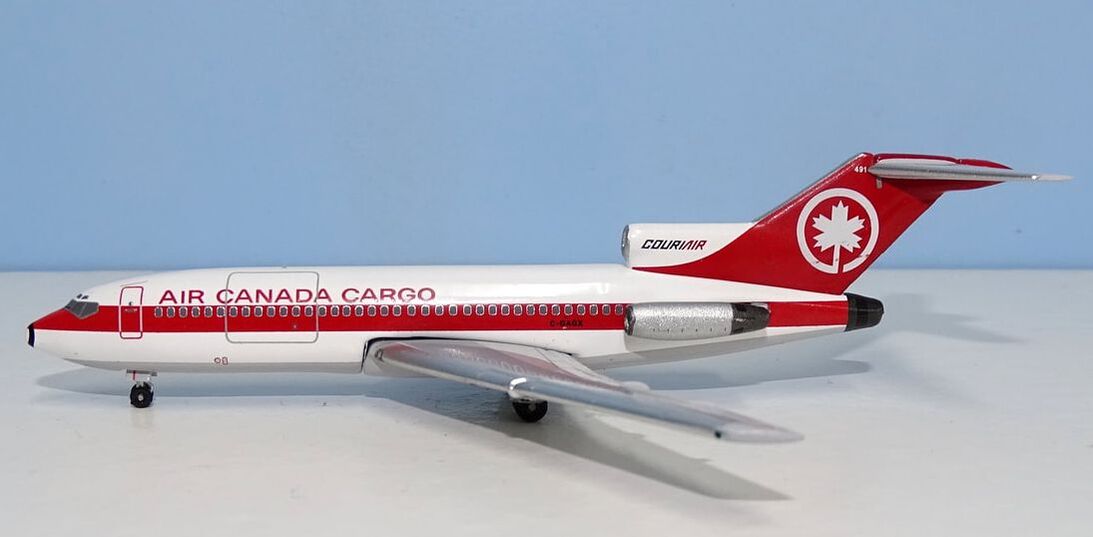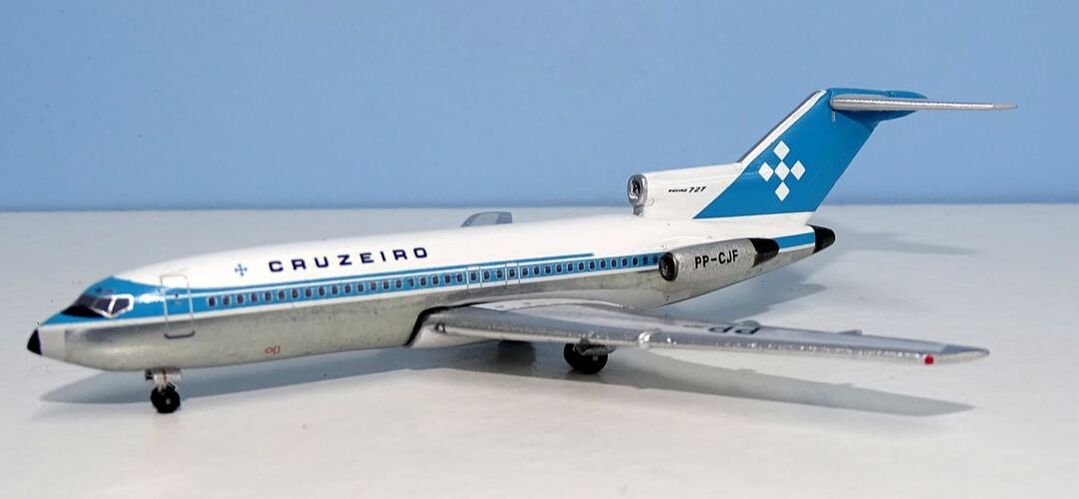Boeing 727-100 Moulds in 1:400 Scale
|
Updated: July 2023
|
|
The Boeing 727 solidified Boeing's place as the world's primary source of civil airliners and the short series 100 was the platform that propelled the larger series 200 to be the globe's most important jet for several decades, until it was surpassed by the 737 in the 1990s. The result of the joint requirements of Eastern, United and American the 727 benefited from Boeing's trip to see De Havilland's progress on its Trident. Not bogged down by BEA's hopelessly blinkered requirements Boeing was able to create a much superior jet. Indeed, it was the first true medium range jetliner and with its exceptional high-lift wing it was able to operate into a wide range of airports - many which had until then not seen jets. A total of 572 727-100s were built and delivered between 1963 and 1972. The type saw service with the US trunks into the 1990s and throughout the rest of the world into the 2000s.
Boeing 727-100 in 1:400 Scale
The short 727 has been reasonably well represented in this scale with 226 models as of July 2023. This outpit is largely due to the efforts of Aeroclassics. Indeed they have made over 3/4 of the models for the type. This isn't entirely surprising as unlike its larger sister the series 200 the short 727s were almost all out of mainline US trunk service by the mid-1990s and so missed the beginning of 1/400 manufacturing and the majority of Gemini's retro-friendly release period too. There have been 5 moulds built but most have seen little usage. As you can see there has been some mould sharing. Aeroclassics mould returned after a 6 year absence in 2020 and is the only mould currently in use.
Boeing 727-100 in Real Life
Before we get to the moulds as usual we'll start with a look at the real thing:
B727-100 Moulds
Dragon Wings Mould (2001)
As is often the case Dragon was first on the scene with a mould in this scale. It shares many of the features of the larger series 200 - indeed too many of the features! The Dragon 727 has some great features but isn't entirely perfect either. The fuselage and nose shape is good but as usual with most Dragon moulds it has the same failings - simple undercarriage, an obvious join between tail and fuselage, plastic wings plus in this case a seam under the wings (albeit a very small one). On some releases the nosegear doesn't have a central hub which makes it look a little odd.
The Dragon main gear sits a little too high and the gear doors are too long. The moulds biggest failing however is that it uses the same tail as the larger series 200 meaning that the series 100s diagnostic oval shaped no 2 engine intake is incorrectly round. That's a pretty major mistake.
The Dragon main gear sits a little too high and the gear doors are too long. The moulds biggest failing however is that it uses the same tail as the larger series 200 meaning that the series 100s diagnostic oval shaped no 2 engine intake is incorrectly round. That's a pretty major mistake.
Dragon only used the mould 7 times but their partner at the time Jet-X used it 20 times for older US classics (mainly Braniff, United, American, PSA and Pan Am). If you can get over the engine and gear then the mould is not bad but I would rather avoid it myself, which is a shame as most of the models made haven't been reproduced by anyone else.
Aeroclassics (2003)
In 2003 Aeroclassics released what is the definitive mould for the 727-100, if only because it has been used so many times in comparison to the others. If you collect classics it would be hard to avoid this mould unless you only get European airlines. It's a good mould so it certainly doesn't need to be avoided, however it isn't perfect. The undercarriage and nose shape are fine, however the wing seam cuts through the wing/fuselage fairing in front of the wing and it sometimes looks a bit tubby in the area behind the wing. The tail top is uneven due to the fitment of the horizontal stabilisers and the upward kink in the front of the tail is missing, whereas it is correctly there on the Dragon mould. Put the Aeroclassics gear, no 2 engine, metal wings and tail fuselage join on the Dragon mould and together there'd be a killer mould. Still I like the Aeroclassics mould just fine and own over 80 of them.
The mould was also used by both Aurora and SMA in very small numbers for Delta and Air West releases respectively. The mould was used steadily until getting its last release in 2014, by which time it had been updated with rolling gears. It didn't resurface until 2020 and since then has been used quite frequently again.
Recent releases have suffered from some highly variable quality issues. These appear to result from overpolishing and/or the age of the mould itself. I have received at least one with an overpolished nose while sometimes the forward join of the wings to fuselage is very gappy and poorly fitted. The Cruzeiro example below illustrates both issues, but not all releases have the problems:
Hogan / Herpa (2007)
Characteristically for Herpa in 400 scale they have a 727-100 mould but it has barely been used. Only a single TWA example was made for Herpa and the other releases, all by Hogan, are for Japanese versions rarely seen on the Western market. The mould looks surprisingly good. The overall shape is nice and it is seamless but the line down the side of the possibly plastic lateral engines is a little offputting. I've never seen it in person and with such a small output it is never going to be an important part of your 727 collection.
Aviation 400 (2008)
The old Aviation400 (not connected directly with the current AV400 brand) is another 727-100 that while looking pretty decent has barely been used. There were only 6 releases and the only one of these anyone really searches for is the Boeing house colours example, which hasn't been made by anyone else. The mould benefits from being seamless at the wing and horizontal stabiliser and the tail and no 2 engine look correctly shaped. The only criticisms I can level at it is that the nose sometimes seems too rounded and as with their series 200 the tail chord is incorrect. The rear edge is at the same angle as the front which is wrong for the 727.
Gemini Jets (2009)
Gemini have produced only 10 models using their Boeing 727-100 mould between 2009 and 2013. There were at the time well publicised issues with the angle of the horizontal stabilisers of most of them - especially the National Airlines version, which as I recall got quite heated on the forums as Gemini didn't accept criticism gracefully. The ten models are all, with the exception of the first (a Dan Air London example), from US airlines with no less than four of them being Alaska Airlines examples (showing the four Alaskana graphics schemes). The others have been from Trans Caribbean, National Airlines, Northwest Orient, Eastern Air Lines and Pan Am. Aside from the Alaska examples Gemini was careful to make sure that none of the models had been released previously by Aeroclassics. Though AC has done similar models of several it hasn't done exactly the same scheme variant.
Aside from the aforementioned issues with the horizontal stabilisers the mould is good, though often it seems to sit quite high on its front wheels, the no 2 engine may be a bit tall and the tail top is much too curved. The horizontal stabilisers indeed proved an issue with my models using the mould and have detached from two of my three versions and have had to be reglued. The last Gemini release (Pan Am) modified the mould. It seems that the issue with the horizontal stabilisers was fixed and at the same time all the undercarriage was lowered and improved.
Aside from the aforementioned issues with the horizontal stabilisers the mould is good, though often it seems to sit quite high on its front wheels, the no 2 engine may be a bit tall and the tail top is much too curved. The horizontal stabilisers indeed proved an issue with my models using the mould and have detached from two of my three versions and have had to be reglued. The last Gemini release (Pan Am) modified the mould. It seems that the issue with the horizontal stabilisers was fixed and at the same time all the undercarriage was lowered and improved.
Here are some shots comparing earlier Gemini 727-100 with the later Pan Am release:
